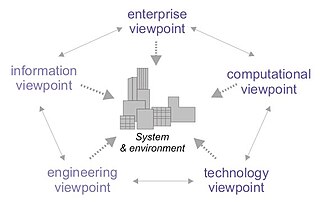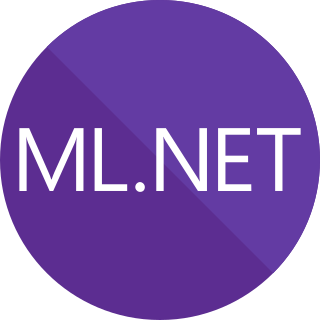
The ITU Telecommunication Standardization Sector (ITU-T) coordinates standards for telecommunications and Information Communication Technology such as X.509 for cybersecurity, Y.3172 and Y.3173 for machine learning, and H.264/MPEG-4 AVC for video compression, between its Member States, Private Sector Members, and Academia Members. ITU-T is one of the three Sectors of the International Telecommunication Union (ITU).

X.25 is an ITU-T standard protocol suite for packet-switched data communication in wide area networks (WAN). It was originally defined by the International Telegraph and Telephone Consultative Committee in a series of drafts and finalized in a publication known as The Orange Book in 1976.
Very high-speed digital subscriber line (VDSL) and very high-speed digital subscriber line 2 (VDSL2) are digital subscriber line (DSL) technologies providing data transmission faster than asymmetric digital subscriber line (ADSL).
3G is the third generation of wireless mobile telecommunications technology. It is the upgrade for 2.5G GPRS and 2.75G EDGE networks, for faster data transfer. This is based on a set of standards used for mobile devices and mobile telecommunications use services and networks that comply with the International Mobile Telecommunications-2000 (IMT-2000) specifications by the International Telecommunication Union. 3G finds application in wireless voice telephony, mobile Internet access, fixed wireless Internet access, video calls and mobile TV.
4G is the fourth generation of broadband cellular network technology, succeeding 3G, and preceding 5G. A 4G system must provide capabilities defined by ITU in IMT Advanced. Potential and current applications include amended mobile web access, IP telephony, gaming services, high-definition mobile TV, video conferencing, and 3D television.
Automatically Switched Optical Network (ASON) is a concept for the evolution of transport networks which allows for dynamic policy-driven control of an optical or SDH network based on signaling between a user and components of the network. Its aim is to automate the resource and connection management within the network. The IETF defines ASON as an alternative/supplement to NMS based connection management.

Reference Model of Open Distributed Processing (RM-ODP) is a reference model in computer science, which provides a co-ordinating framework for the standardization of open distributed processing (ODP). It supports distribution, interworking, platform and technology independence, and portability, together with an enterprise architecture framework for the specification of ODP systems.

H.323 is a Recommendation from the ITU Telecommunication Standardization Sector (ITU-T) that defines the protocols to provide audio-visual communication sessions on any packet network. The H.323 standard addresses call signaling and control, multimedia transport and control, and bandwidth control for point-to-point and multi-point conferences.
G.hn is a specification for home networking with data rates up to 2 Gbit/s and operation over four types of legacy wires: telephone wiring, coaxial cables, power lines and plastic optical fiber. A single G.hn semiconductor device is able to network over any of the supported home wire types. Some benefits of a multi-wire standard are lower equipment development costs and lower deployment costs for service providers.

LTE Advanced is a mobile communication standard and a major enhancement of the Long Term Evolution (LTE) standard. It was formally submitted as a candidate 4G to ITU-T in late 2009 as meeting the requirements of the IMT-Advanced standard, and was standardized by the 3rd Generation Partnership Project (3GPP) in March 2011 as 3GPP Release 10.
International Mobile Telecommunications-Advanced are the requirements issued by the ITU Radiocommunication Sector (ITU-R) of the International Telecommunication Union (ITU) in 2008 for what is marketed as 4G mobile phone and Internet access service.

In telecommunications, 5G is the fifth generation technology standard for broadband cellular networks, which cellular phone companies began deploying worldwide in 2019, and is the planned successor to the 4G networks which provide connectivity to most current cellphones. 5G networks are predicted to have more than 1.7 billion subscribers worldwide by 2025, according to the GSM Association. Like its predecessors, 5G networks are cellular networks, in which the service area is divided into small geographical areas called cells. All 5G wireless devices in a cell are connected to the Internet and telephone network by radio waves through a local antenna in the cell. The main advantage of the new networks is that they will have greater bandwidth, giving higher download speeds, eventually up to 10 gigabits per second (Gbit/s). Due to the increased bandwidth, it is expected the networks will increasingly be used as general internet service providers for laptops and desktop computers, competing with existing ISPs such as cable internet, and also will make possible new applications in internet of things (IoT) and machine to machine areas. 4G cellphones are not able to use the new networks, which require 5G enabled wireless devices.

10G-PON is a 2010 computer networking standard for data links, capable of delivering shared Internet access rates up to 10 Gbit/s over existing dark fiber. This is the ITU-T's next generation standard following on from GPON or Gigabit-capable PON. Optical fibre is shared by many subscribers in a network known as FTTx in a way that centralises most of the telecommunications equipment, often displacing copper phone lines that connect premises to the phone exchange. Passive optical network (PON) architecture has become a cost-effective way to meet performance demands in access networks, and sometimes also in large optical local networks for "Fibre-to-the-desk".

The Next Generation Mobile Networks (NGMN) Alliance is a mobile telecommunications association of mobile operators, vendors, manufacturers and research institutes. It was founded by major mobile operators in 2006 as an open forum to evaluate candidate technologies to develop a common view of solutions for the next evolution of wireless networks. Its objective is to ensure the successful commercial launch of future mobile broadband networks through a roadmap for technology and friendly user trials. Its office is in Frankfurt, Germany.
International Mobile Telecommunications-2020 are the requirements issued by the ITU Radiocommunication Sector (ITU-R) of the International Telecommunication Union (ITU) in 2015 for 5G networks, devices and services.

ML.NET is a free software machine learning library for the C# and F# programming languages. It also supports Python models when used together with NimbusML. The preview release of ML.NET included transforms for feature engineering like n-gram creation, and learners to handle binary classification, multi-class classification, and regression tasks. Additional ML tasks like anomaly detection and recommendation systems have since been added, and other approaches like deep learning will be included in future versions.

Y.3172 is an ITU-T Recommendation specifying an architecture for machine learning in future networks including 5G (IMT-2020). The architecture describes a machine learning pipeline in the context of telecommunication networks that involves the training of machine learning models, and also the deployment using methods such as containers and orchestration.

The ITU-WHO Focus Group on Artificial Intelligence for Health is an inter-agency collaboration between the World Health Organization and the ITU, which created a benchmarking framework to assess the accuracy of AI in health.

Y.3173 is an ITU-T Recommendation building upon Y.3172 specifying a framework for evaluation intelligence levels of future networks such as 5G (IMT-2020). This includes:

Y.3176 is an ITU-T Recommendation, building upon Y.3172 and Y.3173, specifying a framework for evaluation intelligence levels of future networks such as 5G (IMT-2020).











